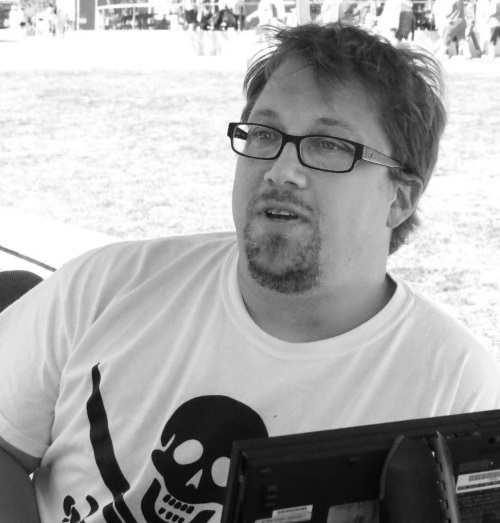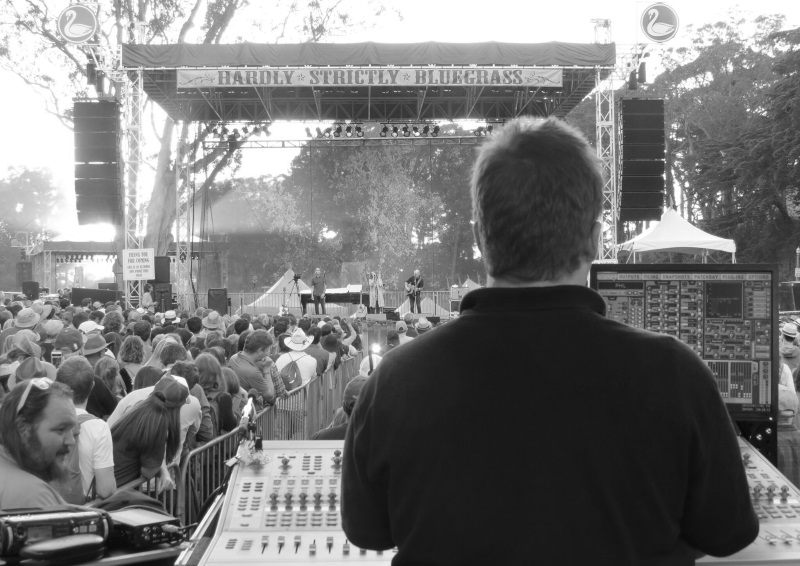
He didn’t jump directly from Randolph to Carlile; the move was gradual. Along the way he toured with OAR as monitor engineer for about a year. “On that tour, I learned about mixing acoustic guitars. Mike Larcey, the band’s FOH, is a master at acoustic instruments,” he says. “It really reset me as far as audio and thinking goes; there’s more than pedal steel!”
Soon after, he became a father, which had a significant impact on his world: “It was time to get down to business.” He toured with Hall & Oates (as FOH) for several dates and credits it with providing a firmer grasp on mixing pop music. “All of the sudden you’re mixing 15,000-seat sheds, every song is a number one hit, and the crowd knows every word and what it needs to sound like,” he says.
Like Nothing Before
Quackenbush was familiar with the Brandi Carlile song “The Story,” and had also worked a festival years ago where the trio (Carlile is joined by twin brothers Tim and Phil Hanseroth) performed. After getting a call about possibly doing FOH with them, he traveled to their home base of Seattle to get familiar.
“We sat down over coffee, and from the start I knew it’s where I wanted to be,” he says. “Their passion about music, production, and family was where I am in my life, and our mutual passions came across.”
The first shows with Carlile were acoustic: two guitars, bass, piano, and three vocals, and the performance quality made an impact right out of the gate. “Ten seconds into my first sound check, I was stunned,” he offers. “It was like nothing I’d heard before, the harmonies were like The Beach Boys or Crosby Stills and Nash. It was so good, and I knew there could never be less than 100 percent from me.”
The trio sought for their shows to be loud and have impact, but at the same, be delicate and intimate. “Dynamics became my life,” Quackenbush notes. “I have to use my left and right brain equally, artist versus technician, and I love it. The show will be anywhere from 85 to 102 dB(A) at FOH. We’re taking the audience on a ride, they know every song, and the songs are special to every person in their own way.”
Current live shows, in support of a new album, By The Way, I Forgive You that was produced by Dave Cobb and Shooter Jennings, has the group bringing many of the elements of the album to the stage. “I was on board from the get-go,” he enthuses. “There are four string instruments, French horn, banjo – and reverb! The reverb is an instrument that I play with these songs; it’s not just turn it on at beginning of a song and mute between songs. It moves and breaths and changes throughout the show. There is no sitting still on this show, the mix is a performance in itself.”

Tools & Guidance
Our conversation shifts to gear choices. With Carlile, he owns the Avid Profile console and control package, and the rest of the equipment is provided by Seattle-based Carlson Audio Systems. “Eventually, I’ll switch to the Avid VENUE S6L (mix system),” he adds. “I love the platform and have been on it from the beginning.”
He’s carrying a Pro Tools HD rig and assorted Waves plugins, and the outboard gear racks include a Sonic Farm Creamliner 3 stereo line signal conditioner, a Lexicon PCM 42 digital delay, PCM 60 and 91 digital reverbs, four Rupert Neve preamps, a Demeter RV-1D reverb, and assorted other tools. There’s also a “case of great microphones” that includes a Neumann KM 105 condenser for Carlile’s vocal.
“For most shows, I have a healthy say about what I want,” he says. Sometimes, however, he’ll go with what’s offered, still always carrying the mic locker as well as a Rational Acoustics Smaart rig for system optimization.
As we wrapped up, I ask Quackenbush what advice he would give to his younger self and/or to someone just starting out. Laughing, he exclaims, “Don’t do it!” followed by, “Stay calm in lousy situations. Listen to the ‘old dogs’ when they talk because they’re often right. Learn as much as you can from people, not just the best they have to offer but also take the worst qualities and learn how not to be. Audio advice is great, but also understand how to act and carry yourself in the most professional manner, and be someone that people want to be around.
“I received two great pieces of advice along the way. One, after trying to be a junior clone of one of my mentors, a genius of a human being named Scott Walrath sat with me and said, “You’re never going to be [that mentor], just be you! The other came from the great Robert Collins. After a rough-sounding show in a terrible arena in Europe, he told me it wasn’t that bad. Once we were loaded out, I went back to FOH to hear him mix Eric Clapton, and after, I asked how he made it sound so great. He told me, “Look lad, I’m just better that you are!”
